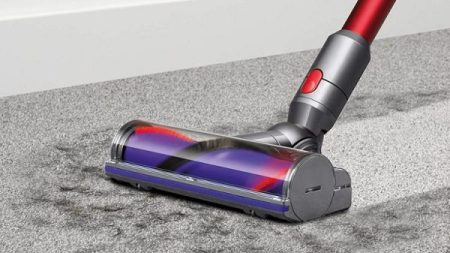Are you ready to let your flag fly but need a place to put it? Installing flagpole Hardware may seem like a complicated project. But, in actuality, it’s a pretty straightforward DIY you could knock out in a weekend.
Are you thinking about installing a flagpole yourself but aren’t sure where to start? We’ve got you covered! Here is your step-by-step guide to flagpole installation.
1. Pick Your Pole
Before you can start installing anything, you’re going to have to find the right flagpole for you. Depending on where you live and whether or not your neighborhood has a homeowners association, there may be rules and regulations in place concerning the type and size of flagpole you can erect.
Make sure you take the time to double-check any rules that may be in place, or your could wind up having to take down the pole you just worked so hard to set up.
HOA rules aside, you’ll also want to make sure you find the right flagpole to suit your needs. While you can pick up a pole on its own and gather the rest of the supplies you’ll need to erect it yourself, in ground flag pole kits can take some of the guesswork and headache out of installing a pole.
So, before you go picking up just any pole, you might want to do a little research and consider all of your options first.
2. Choose the Right Spot
Once you have your perfect pole in hand, it’s time to learn how to install a flagpole.
The first step in installing a flagpole is finding the right location for it. While you want to make sure the airspace around your pole is free of branches or other hazards that could obstruct your flagpole, you also need to think about what’s going to be directly under it as well.
Depending on the height, most residential poles require a hole between 25 and 30 inches deep and 15 to 20 inches wide. Before you start digging, you need to make sure the area is free from any wires or pipes that could get damaged during installation.
3. Gather Your Gear
Once you have your spot picked out, it’s time to gather up the tools you’ll need to get the job done. If you decide to use a flag pole kit,m there’s a good chance it will already come with most of the things you need to install a flagpole.
Here is all of the equipment you’ll need to install a flagpole:
- A post hole digger
- A measuring tape
- A level
- 180 lbs of concrete mix (3 60 lbs bags)
- A large bucket (to mix the concrete)
- course gravel
- Your flagpole and all of its components
Once you gather up all of your equipment, arrange it all around your installation site for ease of access, and you’re ready to get started.
4. Get Digging
After you gather all of your materials, your first step is to grab the pole digger and start your hole.
While you can use a shovel or trowel to dig out a hole for your flagpole, a post-hole digger will make the process a little quicker and leave you with a cleaner-looking final product.
First, mark the spot where you want to dig your hole. Then, open the blades of your post hold digger by squeezing the handles together. Then, raise the digger as high as you can and plunge it into the ground with as much force as you can muster to drive the blades deep into the soil.
Pull the handles open to close the blades and remove the extra dirt from your new hole. Then repeat that process until you’ve reached your desired depth and width.
5. Measure Twice!
Once you finish digging out your hole, you’re ready to move on to installing your flagpole — right? Nope! Before you do anything else, you need to make sure you dug the correct size hole for your project.
While the exact depth of the hole depends on the height and width of the pole you choose, generally, you’ll end up needing something that’s roughly 30 inches deep and 20 inches wide. If you bought a new flagpole or installation kit, make sure you take some time to check the packaging for the exact measurements you’ll need.
Use your measuring tape or a yardstick to ensure your hole is deep enough and wide enough before moving on to the next step.
6. Fill the Hole
While you could install your flagpole in a dirt hole, over time, water build-up could cause some severe damage, and then you’ll have to repeat the process all over again: and that’s where the gravel comes in.
Adding a few inches of gravel to your flagpole hole will help drainage and keep your flag flying a lot longer.
You’ll need to add 4 to 6 inches of gravel to the hole before installing the flagpole. While you can eyeball this measurement, if you want to be precise, you can use your measuring tape to mark out a fill line to help guide you.
7. Install Your Sleeve
With your pole hole prepped and ready to go, it’s time to assemble the flagpole sleeve. Depending on the type of flagpole, you may need to install a bolt in the hole before adding the sleeve.
Push the sleeve down far enough in the hole so that you cover the bottom with the gravel. Leave about an inch of the sleeve sticking above the ground.
When your sure your sleeve is in the right position, use your level to make sure it’s standing perfectly straight, or your flagpole will have a bit of a lean.
Finally, mix your cement, pour it into the hole, and let it sit for at least 24 hours.
8. Raise Your Flag
With your sleeve in place, all that’s left to do is assemble your flagpole and install it. If you decided to get a flagpole kit, this part should be easy.
Then, once you have your pole up, it’s time to raise your flag and enjoy the fruits of your labor.
Your Complete Guide to Basic Flagpole Installation
As we said before, flagpole installation may seem complicated, but it can be a pretty easy project once you know what to do. By following this helpful step-by-step guide, you’ll be able to install your flagpole quickly and easily.
Are you looking for more easy DIY projects? We’ve got you covered. Chewc k out the rest of our blog for more how-tos today!






